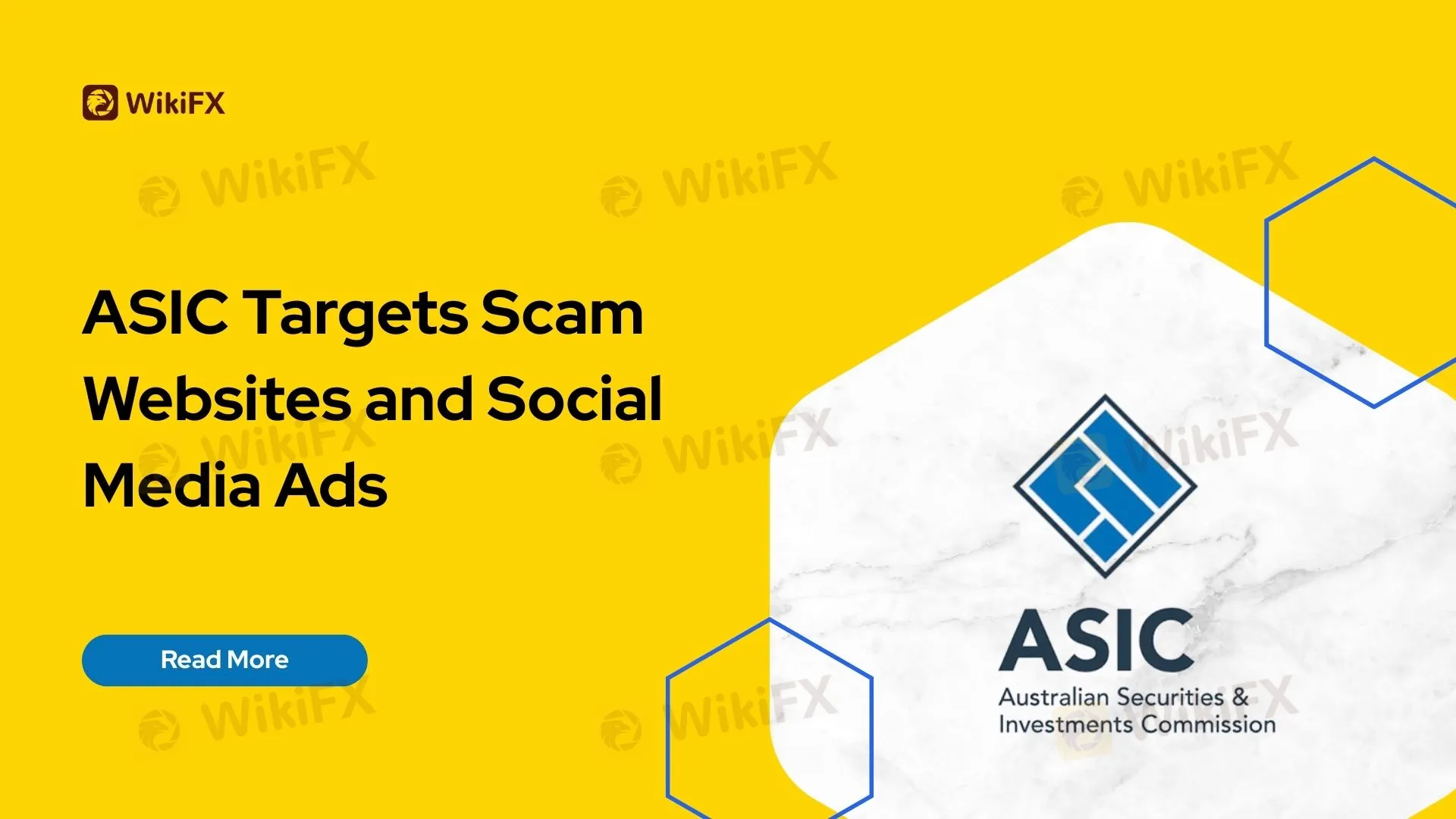简体中文
繁體中文
English
Pусский
日本語
ภาษาไทย
Tiếng Việt
Bahasa Indonesia
Español
हिन्दी
Filippiiniläinen
Français
Deutsch
Português
Türkçe
한국어
العربية
ASIC Targets Scam Websites and Social Media Ads
Abstract:ASIC intensifies crackdown on online investment scams. Learn how WikiFX verification helps traders avoid unlicensed brokers.

The Australian Securities and Investments Commission (ASIC) is enhancing its response to online investment scams by extending website takedown capabilities to include social media advertisements. This move comes as part of a broader crackdown to safeguard consumers from evolving fraud tactics.
Widespread Crackdown on Scam Sites
According to ASICs latest enforcement update, the regulator has removed more than 14,000 investment scam and phishing websites since mid‑2023, averaging about 130 takedowns per week. This effort reflects ongoing commitment to dismantle the infrastructure that fraudsters rely upon to deceive investors.
Top Scam Tactics Uncovered
The report highlights five prevalent methods used by scammers in recent months:
- “AI washing” – Scammers falsely tout the use of AI-powered trading bots that promise easy returns.
- Scam website templates – Rapid deployment of glossy, templated scam sites complete with counterfeit documents and chatbot features.
- Third-party embedding – Fake platforms embed elements like real-time trading charts or news feeds to appear credible.
- Fake news pages – Created using AI, these mimic news articles and celebrity endorsements to lure contact and lead victims into fraudulent pitches.
- Cloaking – Fraudsters tailor site content based on visitor location or device to evade detection.
Why Social Media Ads Now Included
ASIC Deputy Chair Sarah Court emphasized that taking down social media ads is vital to cutting off scam routes toward unsuspecting users. “This expansion will help safeguard Australian consumers by disrupting fraudsters ability to reach them,” she said.
Scam Losses Remain Significant
Investment scams remain Australias leading source of scam-related losses. In 2024, these scams cost Australians approximately A$945 million, despite a 25.9% decline in total scam losses from the 2022 high of A$3.1 billion.
How Traders Can Stay Safe
Scams evolve quickly, but investors are not powerless. Beyond official alerts from regulators like ASIC, traders can also turn to independent verification tools before engaging with any broker or investment offer.
WikiFX provides a global broker database, regulatory license checks, and user exposure records that highlight real-world complaints. By searching a brokers name on WikiFX, investors can immediately see whether the platform holds valid licenses, if its website has been flagged, or if there are unresolved user reports.
In practice, this means:
- Verify: Always check a broker‘s regulatory license status through both ASIC’s Moneysmart Investor Alert List and WikiFXs database.
- Cross-check: Use WikiFXs exposure section to see if other traders have reported issues such as withdrawal problems or misleading promotions.
- Stay updated: Regulators may take time to issue warnings. WikiFX complements these efforts by providing early signals through user complaints and data-driven alerts.
Fraudsters thrive on misinformation and speed. Investors who slow down, cross-check information, and use dedicated verification platforms like WikiFX significantly reduce their risk of falling victim.
Disclaimer:
The views in this article only represent the author's personal views, and do not constitute investment advice on this platform. This platform does not guarantee the accuracy, completeness and timeliness of the information in the article, and will not be liable for any loss caused by the use of or reliance on the information in the article.
WikiFX Broker
Latest News
Fake Trading Platforms Are Spreading Fast Across Asia | How Investors Are Being Tricked
WikiFX Elites Club Committee Concludes Voting! Inaugural Lineup Officially Announced
eToro CopyTrader Expands to U.S. Investors
Is MH Markets Safe or a Scam? Regulation and Fund Security Explained
Ponzi Scheme Operator Sentenced to 14 Years in Western Australia
Chicago PMI Beats But Remains In 'Contraction' For Second Straught Year
How to Add and Take Out Money from Amillex Broker: A Complete Guide
T4Trade broker Review 2025: Is T4Trade Regulated?
FCA warning: These Firms are on the list
Don’t Get Scammed: A Roundup of Common Online Fraud Tactics in Forex
Currency Calculator



